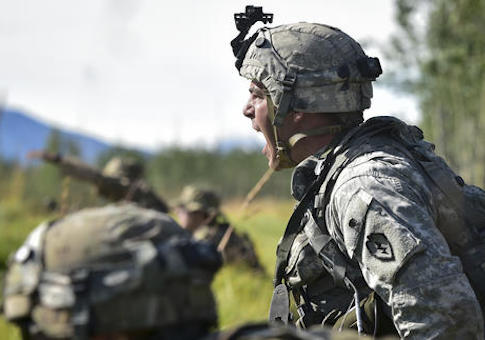The Obama administration is seeking to cut the U.S. Army’s total force size by 25,000 soldiers by 2018, bringing America’s force strength down to 450,000 from its current size of 475,000, according to a new congressional report that shines a spotlight on a growing debate over how large the force should be.
Both chambers of Congress and the White House hold disparate views about how large the U.S. Army should be, according to a new congressional research report that highlights the differences between the governing bodies.
While the Obama administration’s Defense Department is seeking to cut the force by 25,000 over current levels, the House is proposing to grow the Army by 5,000. The Senate is proposing to cut levels by 15,000.
The disparate plans highlight a lack of cohesion in the U.S. government about how strong the Army should be as America stretches its fighting forces across the globe to counter Islamic terrorism and a range of other threats.
"The debate about the size of the Army may well continue into the next Congress, as the Department of Defense plans further reductions in the size of the Army, proposing FY2018 end strength of 450,000," the report states. "There will be also be a new president in January, and his or her policy priorities may revise the contours of this debate."
The debate comes down to money and the preparedness of U.S. forces, according to the report.
"The divergence between the administration request and the House and Senate bills reflects differing assessments of a variety of factors, including operational tempo, budgetary constraints, and, most frequently, readiness," the report states.
Efforts to shrink the U.S. force have been complicated by growing global threats to American allies and forces.
The U.S. National Military Strategy, published in June 2015, "describes a global environment marked by increasing interdependence, complexity, and the diffusion of information and technologies across state boundaries," according to the report, which highlights major threats posed by Russia, Iran, North Korea, and China.
The threat is further complicated by the growth of rogue terrorist regimes, such as ISIS, al Qaeda, and a range of other extremist groups.
Military leaders have warned that budgetary constraints have gutted key aspects of the military, including its efforts to modernize and develop new equipment.
General Mark Milley, the chief of staff of the Army, recently told Senate leaders that "readiness is the top priority for the Army," according to a Senate Armed Services Committee report on the matter. "In light of the threats confronting our nation, to include Russia, China, North Korea, Iran, and ISIS, the Army has accepted high military risk to meet the requirements of the National Security Strategy and the Defense Planning Guidance."
The Obama administration "strongly objects" to efforts to increase the Army’s end strength, saying that such a move would "force the [Defense] Department to take additional risk in training and readiness of the current force, as well as investment in and procurement of future capabilities," according to the White House.
"Adding unnecessary end strength in the manner proposed in the bill would invite a significant, unacceptable risk of creating a future hollow force, in which force structure exists, but the resources to make it ready do not follow," the administration said.
